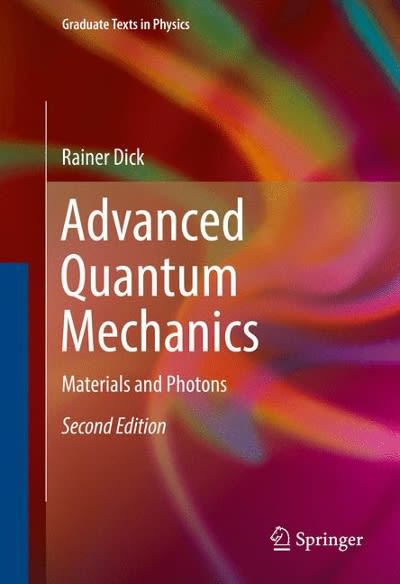Question
#1. A solid disk of mass m 1 = 9.4 kg and radius R = 0.24 m is rotating with a constant angular velocity of
#1. A solid disk of mass m1= 9.4 kg and radius R = 0.24 m is rotating with a constant angular velocity of = 35 rad/s. A thin rectangular rod with mass m2= 3.1 kg and length L = 2R = 0.48 m begins at rest above the disk and is dropped on the disk where it begins to spin with the disk.
1)What is the initial angular momentum of the rod and disk system?
_kg-m2/s
2)What is the initial rotational energy of the rod and disk system?
_J
3)What is the final angular velocity of the disk?
_rad/s
4)What is the final angular momentum of the rod and disk system?
_kg-m2/s
5)What is the final rotational energy of the rod and disk system?
_J
6)The rod took t = 5.5 s to accelerate to its final angular speed with the disk. What average torque was exerted on the rod by the disk?
_N-m
#2. A block with mass m =6.8 kg is hung from a vertical spring. When the mass hangs in equilibrium, the spring stretches x = 0.22 m. While at this equilibrium position, the mass is then given an initial push downward at v = 5 m/s. The block oscillates on the spring without friction.
1)What is the spring constant of the spring?
_N/m
2)What is the oscillation frequency?
_Hz
3)After t = 0.3 s what is the speed of the block?
_m/s
4)What is the magnitude of the maximum acceleration of the block?
_m/s2
5)At t = 0.3 s what is the magnitude of the net force on the block?
_N
6)Where is the potential energy of the system the greatest?
At the highest point of the oscillation.
At the new equilibrium position of the oscillation.
At the lowest point of the oscillation.
Step by Step Solution
There are 3 Steps involved in it
Step: 1

Get Instant Access to Expert-Tailored Solutions
See step-by-step solutions with expert insights and AI powered tools for academic success
Step: 2

Step: 3

Ace Your Homework with AI
Get the answers you need in no time with our AI-driven, step-by-step assistance
Get Started


